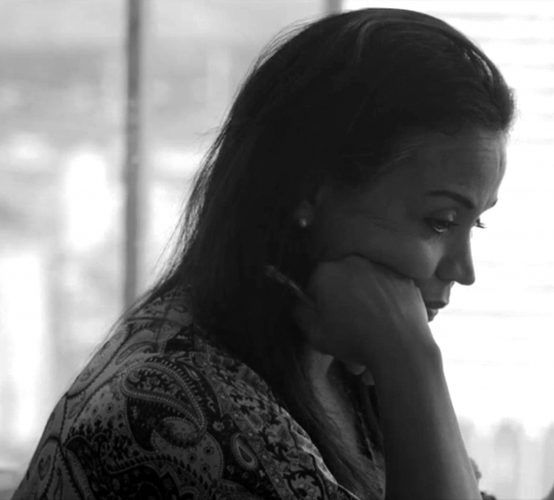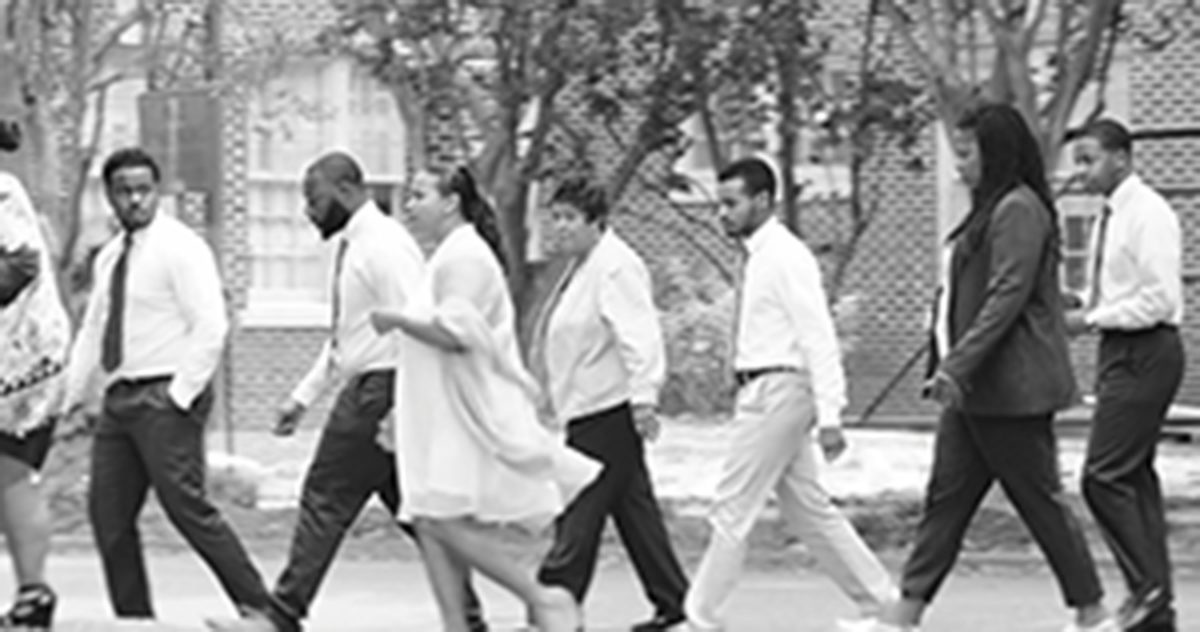Early in “Time” Sibil Fox Richardson – you may know her as Fox Rich – is recording a video for her social media, announcing an upcoming talk she’ll be giving. “It’s not a conversation,” she says. “It’ an experience.” The words feel instructive, and like a window into Garret Bradley’s documentary, which puts forward a decisive challenge to the ways we think of the prison system, and the ways we think of stories about that system. From its opening, accented by the sounds of a restless piano playing underneath the music and the degraded black-and-white images of a home-video recording, “Time” immediately latches on to an idea that will sustain it for the rest of its 81-minute running time. Even as the film engages with the criminal justice system and the ways it disenfranchises the poor and persons of colour, the most pressing concern of “Time” is the earnest commitment of a woman, leaning into a camera, speaking to her absent husband about the love she has for him and their children.

“Time” presents a familiar story. Sibil and Rob were a couple on the brink of a new business in 1997 when an investor suddenly pulled out. The couple, with their backs against the wall, built a dangerous plan to rob a branch of the Shreveport Credit Union, with Sibil as the getaway driver. The plan is thwarted, and despite having no prior arrests Sibil was sentenced to 19 years and her husband to 60. This information about the lead-up to the crime and their first appearances in court come in brief asides. Little time is spent explaining, or even contextualising the immediacy of the crime. That’s not the concern. Instead, “Time” persuasively asks, what happens to a family that has to grapple with a situation like this? And how do we decide when time is served? How much time is enough?
“Time” originally began as a short documentary about Sibil, who served three-and-a-half years before being released. But the initial idea for the film is shifted by the employment of Sibil’s home videos, recorded over the past two decades. As Bradley interpolates scenes of the present with the scenes from the home videos, “Time” seems to burst forth like something that feels natural, spontaneous and sincere. Sibil, who calls herself an abolitionist, has her eyes clearly-focused on overturning the sentence against her husband – a 60-year sentence with no parole. But her ideas and thoughts run beyond the personal, as she crusades for a more just criminal justice that sees prisoners as people rather than merely statistics.
Bradley’s camera is a tender partner in Sibil’s fight, working in sensations and the implicit rather than leadenly emphasising the explicit. We intuit the ways that Sibil’s fight becomes a kind of performance as she must work within the parameters of the carelessness of the justice system. There’s a recurring scene where Sibil makes calls to the authorities to investigate progress of her petition, oftentimes with no movement. Her patience is effortful but a necessary reminder of the ways black women must navigate a system that discards them. Rather than a clear three-act structured piece, Bradley presents a series of moments punctuating Sibil’s public facing role as an activist with those more personal home videos and scenes in the present with her sons.
And, as “Time” goes on, it’s the little moments that come to take on the bulk of the emotional heft. In a scene, we watch Sibil helping one of her sons learn French. She playfully praises his ability, earnestly displaying her pride. The moment offers little in the way of the central plot, and yet it attains a profundity that made me overwhelmed. In that moment, it feels like Bradley shifts the point of “Time.” “Time” is not working to be a critique of the justice system, or it’s not only working towards that. Instead, Bradley’s work – supplemented by Sibil’s short films – is an act or restoration. “Time”, and time, are working to restore the humanity to these people – placing that front and centre. This is more than the system; it is about the people at the centre.
And, in that way, “Time” becomes fascinating for what it does not make us privy to. Bradley eschews any traditional information dump. There’s much context that is left out. But this is what makes “Time” feel specific as a film. If we want a streamlined account of the Richardsons’ struggle, there are avenues to read it. But in “Time,” Bradley is privileging a dissonant family engagement with the world and the people around it. With “Time” we are invited to experience what those decades apart feel like for this family.
By shifting focus from the expected narratives and platitudes, “Time” is deliberately making a statement about the ways it wants to interrogate the lives of these people. The story of mass incarceration is pertinent in America, and around the world, where the criminal justice gets by on packing prisons. “Time” winnows that large story down to a specific family. There is much to retain from the film, which feels like a valuable starting-point for discussions on race, criminal justice, crime and rehabilitation. Bradley’s work incisively considers the breadth of issues in “Time”. But, even as her work considers the world at large, “Time” recognises that beyond concepts and ideas, the tender moment of a family embrace is as resounding as any treatise. And “Time” is valuable for the restorative ways it recognises the humanity in the people that the world so often ignores.
Time played in the Main Slate programme at the New York Film Festival and will be released on Prime Video on October 16.





